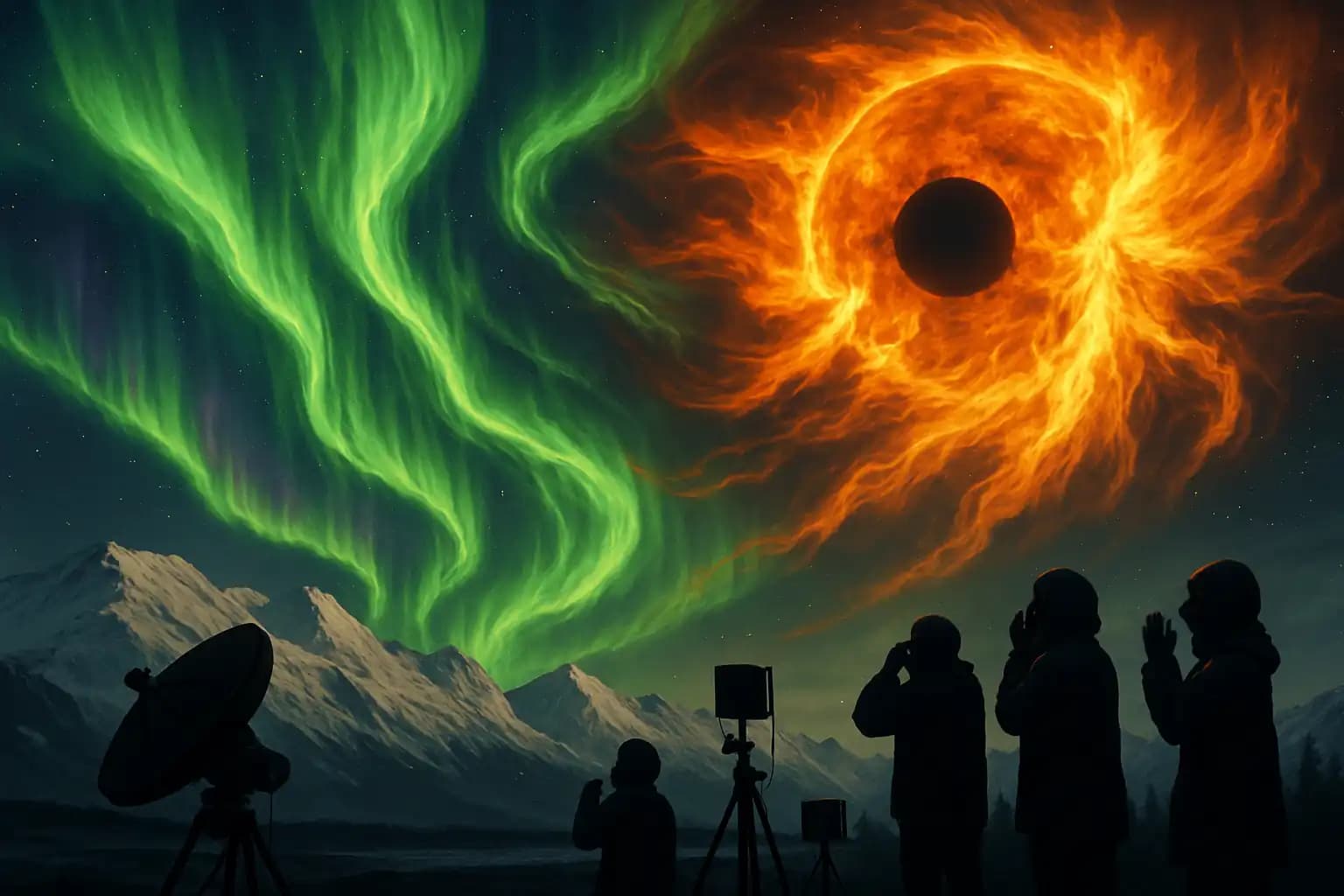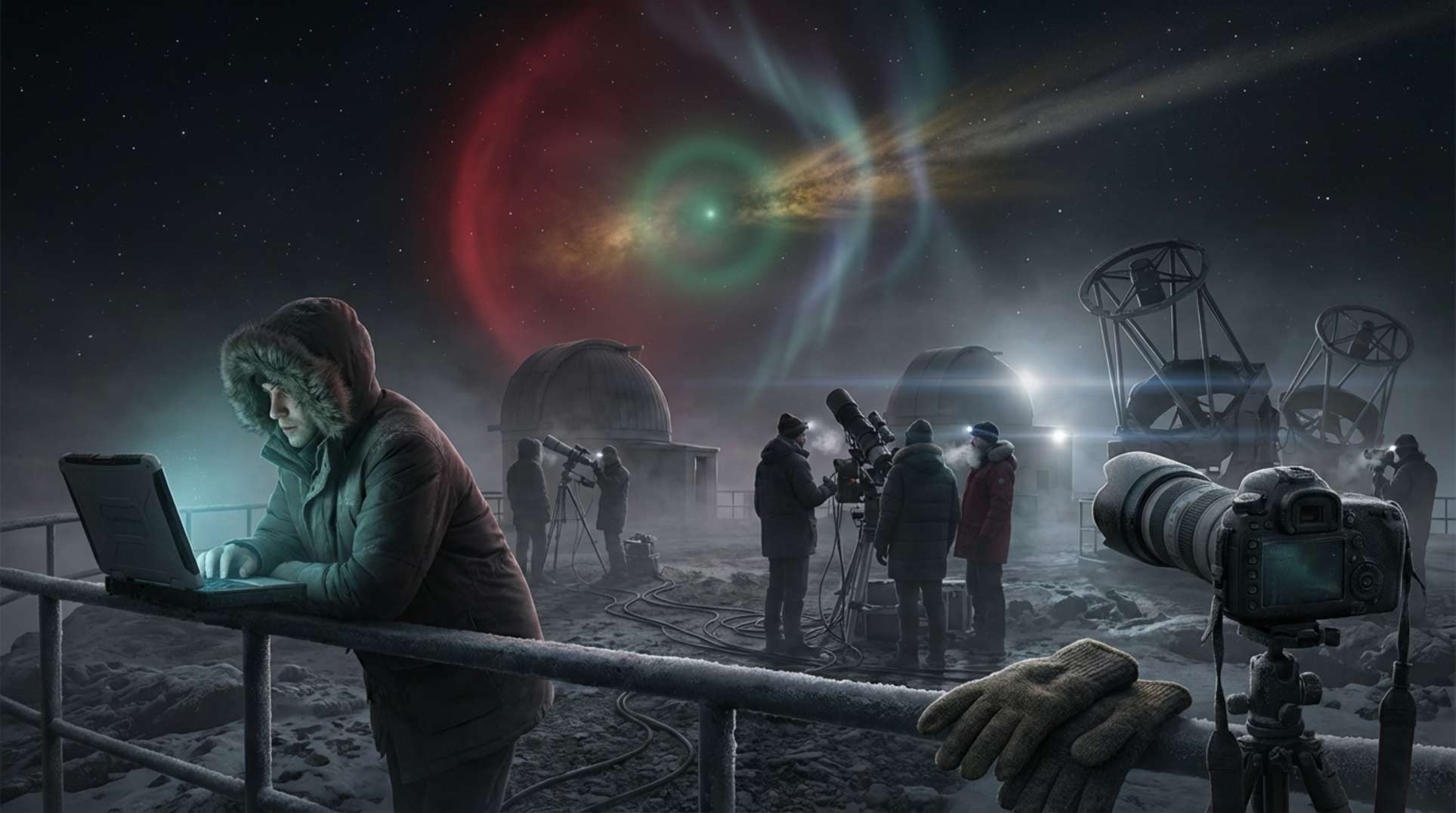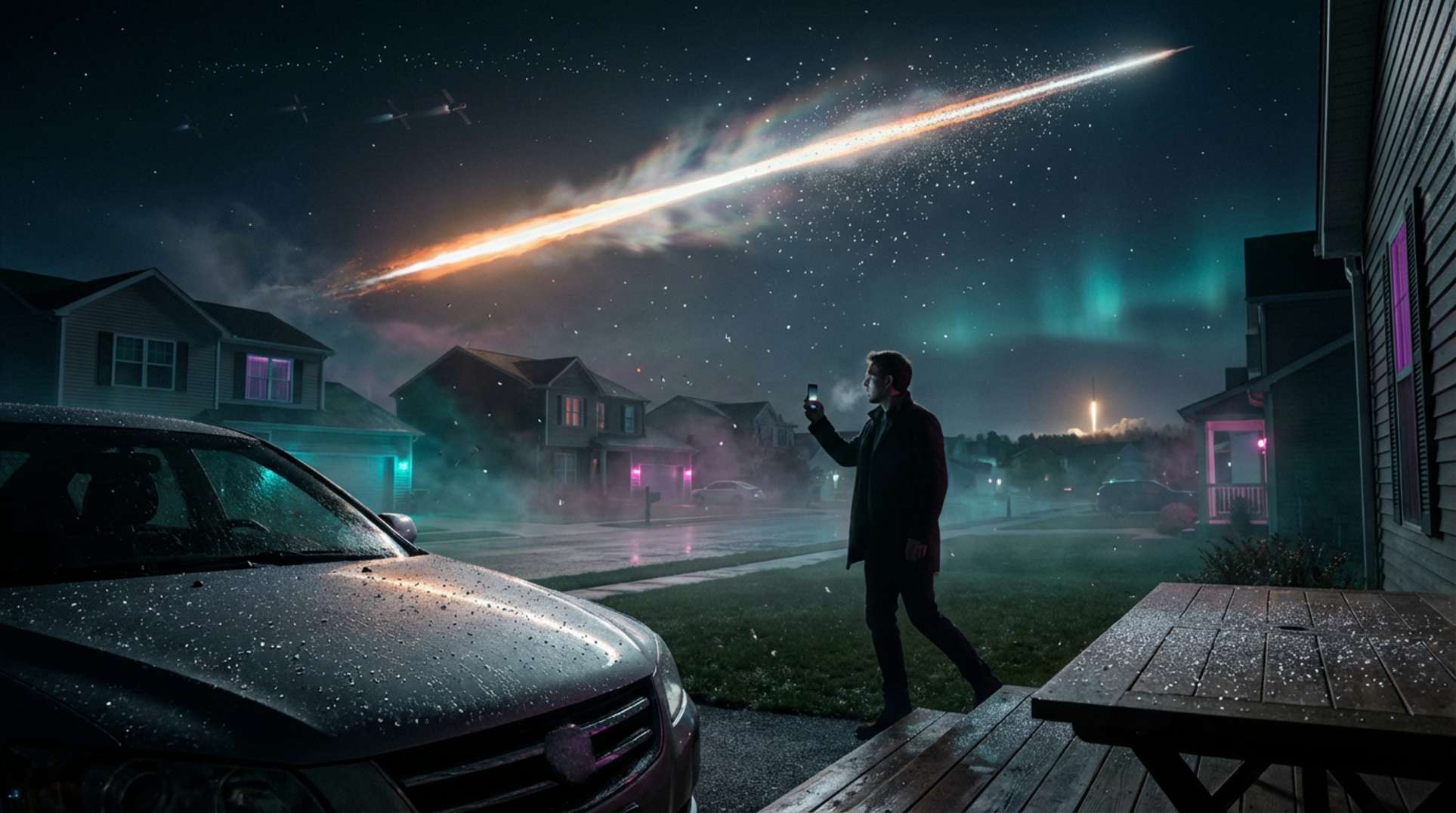It sounds like a doomsday cult newsletter or the fevered rantings of a late-night survivalist. This isn’t science fiction: In recent history, the planet sidestepped a solar bullet by less than two weeks. With solar superstorms, the difference between normalcy and grid meltdown can be a cosmic rounding error. This event—often compared to the infamous Carrington Event of 1859—missed Earth by just nine days, preserving our fragile technologies (for now). For Alaska’s aurora researchers, the near-miss reminds them that while the lights in the sky dazzle, the science behind them holds life-or-death implications.
Solar storms, or coronal mass ejections (CMEs), hurl billions of tons of electrically charged plasma across the solar system. When these high-speed ejecta collide with Earth’s magnetosphere, chaos ensues. If the timing aligns poorly, GPS, the internet, and national power grids could vanish overnight, much like tube radios and telegrams. Recent research and satellite observations confirm (event overview) that Earth’s last near miss could have mirrored the Carrington Event—a superstorm so fierce that telegraph wires ignited while auroras made night skies glow from the Arctic to the Caribbean (full history).
Alaska: Frontline of Aurora Science and Superstorm Surveillance
Want to see space weather in action? Go north—way north. Alaska isn’t just a permafrost paradise; it’s a living laboratory for geomagnetic phenomena. Scientists at the Geophysical Institute and the legendary HAARP facility have made the state ground zero for aurora research. They conduct real-time experiments to decipher the secrets behind every emerald-green shimmer (historic context). While some conspiracy theorists blame HAARP for weather control, the real aim is studying how charged particles from the sun impact the planet’s atmosphere—creating psychedelic skies and clues for future solar hurricanes (science interview).
This research goes beyond vacation planning for aurora chasers. It’s about establishing early-warning systems when space weather turns volatile. Ground-based magnetometers and global partnerships may one day provide crucial moments—seconds, perhaps—to unplug and protect technological civilization. For a broader view of how disruptions can ripple through society, see this investigative analysis on unexplained solar activity impacts.
Carrington Event: The Benchmark for Existential Solar Risk
The benchmark for sun-induced chaos remains the Carrington Event. In the early hours of September 1859, telegraph lines crackled with currents induced by Earth’s fluctuating magnetic field. Messages flowed without batteries, while some equipment scorched or ignited. The auroras glowed so brightly miners in the Rockies mistook it for sunrise and began cooking breakfast. If a similar event struck today’s electronic world, experts predict weeks—if not months—of catastrophic outages (risk assessment).
Our near miss isn’t just a historical curiosity. An event of Carrington strength needs only to align with Earth’s orbit—and its results could overshadow Y2K, even reset civilization itself (deep reset scenarios). Planners worry about losses ranging from electrical grid failures to digital currency collapses, with long-term societal stress creating systemic irregularities detailed in latest global anomaly reports.
What Would Happen if a Solar Superstorm Hit Today?
Picture your phone dying, your car refusing to start, and your refrigerator becoming a glorified cupboard. Now multiply that by a billion. Beyond blackouts, a Carrington-level CME would fry satellite networks, scramble GPS data, and transform your online bank account into Schrödinger’s ledger. In the ensuing chaos, water systems, hospitals, and emergency responses could regress to the dark ages before you can say “Faraday cage.” Solar superstorms aren’t average blackouts—they’re civilization-level wildcards (ITU global readiness).
It’s no surprise agencies and governments are finally paying attention. Some are reevaluating infrastructure resilience while others game out chain-reaction catastrophes darker than those in generic disaster movies. Even tech giants are now mapping space weather risks alongside threats like cyberwarfare (digital warfare insights) and AI failure scenarios (alignment warnings).
Are We Ready for the Next Near Miss—or Direct Hit?
The silver lining? Superstorms are rare—a Carrington-scale blast statistically occurs only once every 500 years. Yet, rising solar activity and more devices per square meter mean the world is increasingly vulnerable than ever (NOAA’s educational take). Alaska’s status as aurora capital positions it as a natural watchtower. The collaboration among scientists, survivalists, and dreamers may make a critical difference.
One thing is clear: the next “missed us by nine days” could result in a direct hit. So keep your bug-out bag ready and subscribe to solid sources like Unexplained.co. The northern lights remind us that beautiful phenomena can also serve as nature’s warning shot. In times of crisis, it’s not the prepared who panic, but everyone else.




